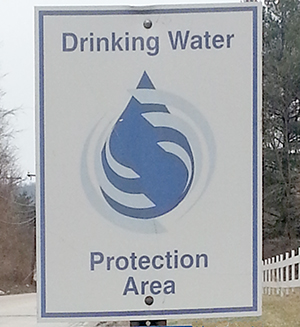 My new living room sofa came with a furniture care plan that included various products to use to protect my beautiful, white (What was I thinking?) couch. The company providing these products has been in business for nearly 100 years, so their protection plan should work, right? We all know, though, that a protection plan is only as good as the implementation. If I never open these products and apply them to my couch, I’ll end up with a very stained (and not-so-white) couch from all the accidental spills.
My new living room sofa came with a furniture care plan that included various products to use to protect my beautiful, white (What was I thinking?) couch. The company providing these products has been in business for nearly 100 years, so their protection plan should work, right? We all know, though, that a protection plan is only as good as the implementation. If I never open these products and apply them to my couch, I’ll end up with a very stained (and not-so-white) couch from all the accidental spills.
On a much grander scale, this same concept applies to your Wellhead Protection Plan. Having a protection plan in place for your drinking water wells doesn’t mean you are done; you need to ensure your assets are protected.
So, dust off that binder and figure out what needs to be implemented in your plan before your next submittal date. Don’t know your next submittal date? Refer to the Phase I or Phase II Plan approval letter you received from IDEM. The next submittal date will be identified in the letter. If you can’t find it, refer to the Wellhead Protection Program Tracking Database on IDEM’s Wellhead Protection Program webpage to look up your due date. After your Phase II plan is approved, you are required to submit information to IDEM every 5 years.
The Wellhead Protection Program protects ground water drinking supplies from pollution. The program implements management strategies for residents, businesses, municipalities and industries to prevent the contamination of the drinking water source. Many of you may have heard of the problems West Virginia is experiencing from the chemical contamination of the river used as the intake for their drinking water. While this is not exactly the same situation you may experience with water wells, it should alert you to how easy water can be contaminated.
Although having a written plan is a good start, the most important part is the implementation. Here are some helpful tips for implementing your Wellhead Protection Plan.
Local Planning Team
Get your planning team together every year to review and update the plan. It is helpful to have a variety of members on the team including: utility employees, board members, planning commission, local emergency response agencies and concerned or affected citizens.
Potential Contaminant Sources
Review and update your inventory of potential contamination sources within your wellhead protection area at least annually. Your local planning team should review each site to determine if changes have occurred in ownership, construction, spills and chemical storage. Send notifications and, when possible, develop relationships with the owners of your Potential Contaminant Sources to make them aware of the impact they might have on the drinking water source. Each facility should have controls in place to prevent spills and know how to react to a spill when it happens.
Public Education
It is important for the community to understand the Wellhead Protection Program exists and that drinking water and watershed protection is their responsibility too. You can educate them through the Drinking Water Quality Report or the Consumer Confidence Report that is provided to utility customers annually. Communicate with them through local newspaper articles, utility website postings or utility bill supplemental materials. You will want to include pamphlets or brochures about the Wellhead Protection Program, properly abandoning water wells, proper operation and maintenance of septic systems and proper disposal of household hazardous wastes.
Utility Employee and Training
Since your utility employees work on the wells and water distribution system routinely, training is important. Your employees should be trained on well security, sanitary setback management requirements, spill response procedures near the wells, and emergency contact procedures. Do your utility employees need training? View our recorded webinar on the general requirements for sanitary setbacks and emergency response procedures.
I feel inspired! (Or at least I hope you do.) These helpful tips should point you in the right direction for implementing your Wellhead Protection Program. By carrying out the plan and properly educating all parties, the residents, businesses and utility employees can help ensure the community has a safe water supply and clean waterways now and in the future.
Sources: Source Water: Resources and Reference Materials, Wellhead Protection Program, Hoosier Water Guardian Awards Program, Indiana Wellhead Protection Rule (327 IAC 8.4-1).
Tags

